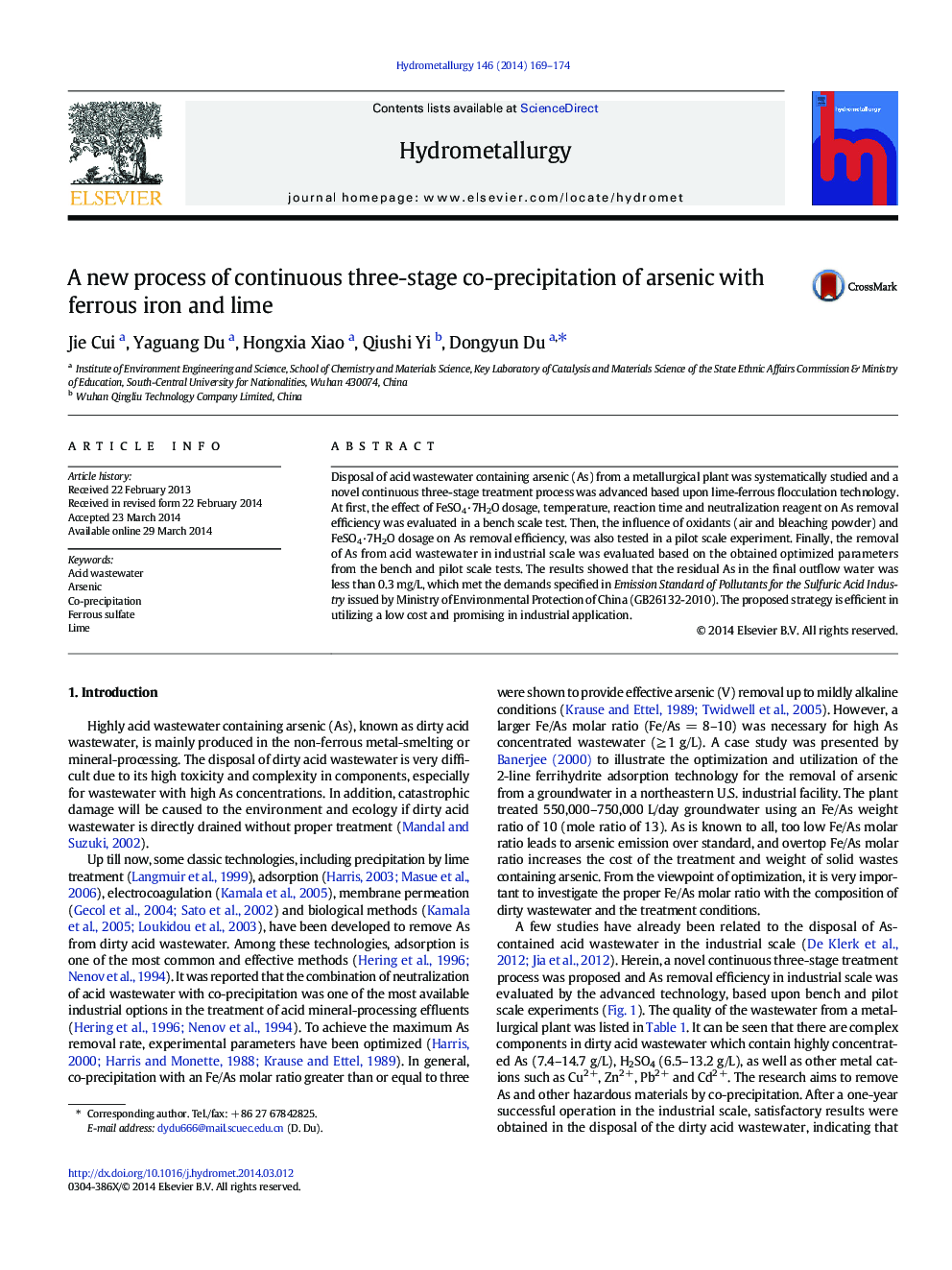| Article ID | Journal | Published Year | Pages | File Type |
|---|---|---|---|---|
| 212145 | Hydrometallurgy | 2014 | 6 Pages |
•Develop a three stage method for As and Cd removal for dirty acid wastewater•The Fe/As molar ratio was decreased from 8:1–20:1 to 4:1.•Air oxidation instead of oxidant was used to reduce the operation cost.•Bench, pilot and industrial-scale tests exhibit efficient As and Cd removal.•Resource utilization of the produced solid waste was proposed.
Disposal of acid wastewater containing arsenic (As) from a metallurgical plant was systematically studied and a novel continuous three-stage treatment process was advanced based upon lime-ferrous flocculation technology. At first, the effect of FeSO4·7H2O dosage, temperature, reaction time and neutralization reagent on As removal efficiency was evaluated in a bench scale test. Then, the influence of oxidants (air and bleaching powder) and FeSO4·7H2O dosage on As removal efficiency, was also tested in a pilot scale experiment. Finally, the removal of As from acid wastewater in industrial scale was evaluated based on the obtained optimized parameters from the bench and pilot scale tests. The results showed that the residual As in the final outflow water was less than 0.3 mg/L, which met the demands specified in Emission Standard of Pollutants for the Sulfuric Acid Industry issued by Ministry of Environmental Protection of China (GB26132-2010). The proposed strategy is efficient in utilizing a low cost and promising in industrial application.
